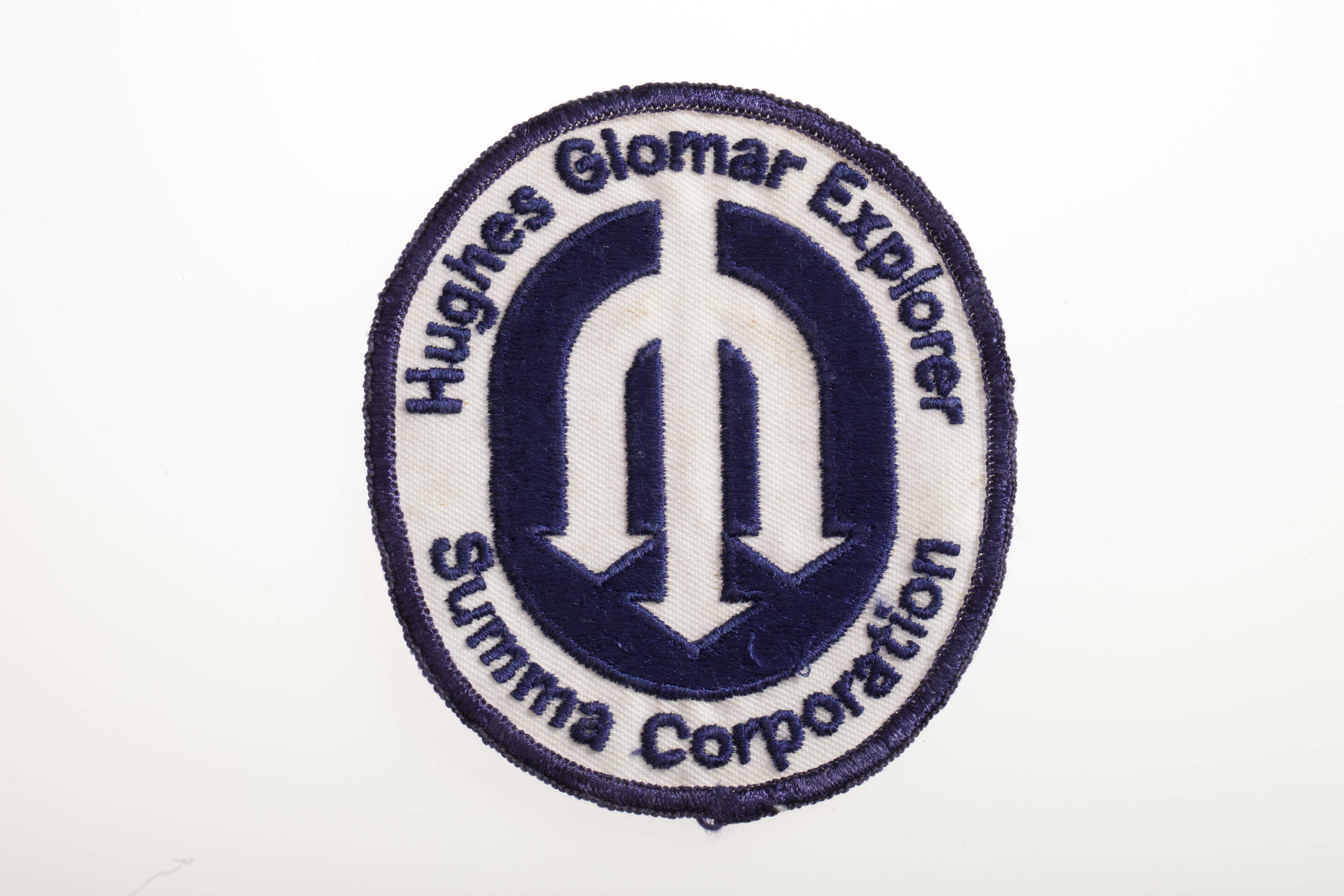Artifact Details

The CIA was involved with the Glomar Explorer project for years to retrieve a sunken Soviet submarine from the Pacific Ocean floor in 1974.
Crew members aboard the Glomar Explorer wore this patch, with the Summa Corporation cover provider clearly identified, on their uniforms.
Artifact Specs
9.5 cm x 8 cm x 0.2 cm
(L x W x H)
Learn More
The Glomar Explorer in Film and Print
Project AZORIAN 40th Anniversary
Video
The Debrief: Behind the Artifact - GLOMAR
Did you know that the phrase “We can neither confirm nor deny” started right here at CIA?
Known as the Glomar response, this was the CIA’s reply to the press, after we went on an undercover mission to retrieve a Soviet submarine from the depths of the ocean. In 1968, a Soviet K-129 missile submarine sank to the bottom of the ocean, about 16,500 feet. That’s almost 11 Empire State Buildings.
It sank to the bottom and the Russians couldn’t find it, but we did, and we wanted to go after it. It wasn’t safe enough though for us to just go out in a US Navy carrier and we also needed to create the technology that would go down and grab the submarine from the bottom of the ocean floor and that vessel to house it. So, really what we needed was a perfect cover mechanism and that came in the form of Howard Hughes.
The Hughes Glomar Explorer was first of its kind, deep sea mining technology, because that was the cover. Howard Hughes was going to mine the ocean floor for these manganese nodules, but really CIA was on the vessel. Everything within the cover had to look legitimate though, even this mailbag or the overalls that were worn by the crew.
We created a claw, it’s sort of like if you’ve ever played that game at an arcade where you know you take the claw and you maneuver it down and you grab the stuffed animal. It’s a lot like that except, you’re going to pull up a multi-ton submarine from the bottom of the ocean. The claw was named Clementine, you know, miner 49er and his daughter Clementine.
Unfortunately the claw did buckle as it was pulling the submarine up from the bottom of the ocean and part of the sub broke off. Much of what we retrieved is actually still classified.
Even though we didn’t get all of the sub on our first try, we wanted to go back and retrieve the rest. We worked really hard to keep this out of the press, as it would expose their officers, possibly putting them in danger. It would not allow for us to go back to get the rest of the submarine, and in this case it would have exposed a really important cover mechanism in Howard Hughes. Unfortunately this article in the LA Times sank our efforts.
When the press started inquiring, we realized that saying yes to some things and no to others may give them too many breadcrumbs and to protect — our mechanisms, our methods, and our people, we came up with the phrase “We can neither confirm nor deny.”
